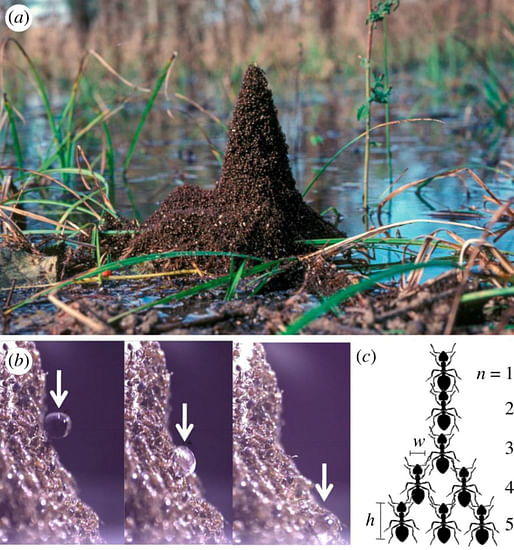

Scientists at Georgia Tech were trying to figure out how ants built themselves into towers to escape confinement or danger. They put a small pole in the middle of a dishful of ants and filmed what happened. The ants, they found, climb upwards, on top of each other, until they find an empty spot. Then they stop. The next one does the same, and so on. — Quartz
Alexander McQueen, rebel of the fashion world renowned for his wildly imaginative designs, always said that there is no better designer than nature. Through billions of years of evolution, life's products, so to speak, have been extensively prototyped, market tested, upgraded and refined. So, it is no wonder then why creative minds increasingly turn to nature to look for innovative design solutions.
Often referred to as biomimicry, the discipline has had a growing presence in the field of architectural design. With a recent study from Georgia Institute of Technology on how fire ants form towers, the architectural world has a new potential take away from nature. Done simply through trial-and-error, the fire ants create bell shaped structures by climbing on top of each other until they find an empty spot, at which point they stop. Each ant supports only three others above them, creating a structure where each ant bears the same load and the results look a lot like the famed Eiffel Tower.
By accident, the researchers left the video to record for an extra hour, allowing for an unexpected discovery. As the tower grew, the ants in the middle started sinking and climbing out from the bottom. They then restarted their journey to the top as they continuously rebuilt the tower. Researchers believe that this construction method could be useful in programming modular robots for building purposes. Currently, robotics are challenged when building upwards and this technique could allow them to turn themselves into towering structures.
No Comments
Block this user
Are you sure you want to block this user and hide all related comments throughout the site?
Archinect
This is your first comment on Archinect. Your comment will be visible once approved.